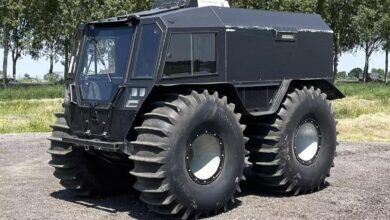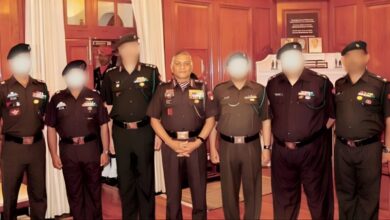Operation Chequerboard: Indian Army Averted The 2nd 1962 War

When we hear about any military operation, the first thing that comes to our mind is that the army kills the terrorists. But Operation Chequerboard/Operation Checkerboard is way different from this type of conventional military operation.
Zero kills, No encounter, Exclusively Power projection.
And this power projection averted the war.
Let’s know this unique operation from its origin
Sumdorong Chu standoff to Operation Chequerboard
After the 1962 defeat, the Government of India decided to leave Tawang City in the event of a new war as there was no viable defense location in the North of Tawang.
Instead of Tawang, the army will prepare for war on the Se La Pass located in the south of Tawang.
But after the review meeting of the 1980s, according to the military strategist, it is necessary to defeat Tawang in the future conflict. And the army declared the defense line for Tawang near Hatu la bridge.
Every year since 1983, the Intelligence Bureau (IB) team stayed for a few months in the Sumdorong Chu pasture. This team would go there in the summer and return in the winter season. This cycle continued for two years. In 1986, the team found that the Chinese had already arrived there and had set up a semi-permanent structure.

It was initiated by China moving a company of troops to Wangdung, a pasture to the south of Sumdorong Chu that India believed to be its territory. The Indian troops stood their ground on the neighboring Longro La ridge.
This area was close to the Namka Chu valley. After the 1962 war on this disputed area, only temporary construction was allowed. But, in violation of the agreement, the Chinese army started building permanent camps here.
Operation Falcon
General K. Sundarji launched Operation Falcon to stop China’s attempt to unilaterally change the status quo. In this operation, which lasted from 18 to 20 October, soldiers and military vehicles were transported to Zemithang. In addition, the Indian Army had captured several high-altitude and strategically important locations like the Hathung La Ridge.
Within the next 6 months only, General Sundarji was successful in transporting Weapons and Ammunition, setting up an arms depot, and building a helipad. In short, within a few months, a basic observation post had turned into a full-fledged base.
China had already acquired a large military presence on the Tibet border. By the beginning of 1987, China had also started increasing its presence along the border with 20,000 soldiers. India urged us to work together to de-escalate the tension between both countries but Chinese military officers stubbornly rejected this.
Rather, moving forward, 8 more divisions were stationed in eastern Tibet. It was clear that China wanted to scare India by projecting power as part of its strategy.
Statehood to Arunachal Pradesh
This military movement of China provoked the Indian government to give statehood to Arunachal Pradesh. As a result, on 20 February 1987, the Indian government granted statehood to Arunachal Pradesh despite China’s resistance.
In early 1987 Beijing’s tone became similar to that of 1962, and with the Indian Army denying to stand down, Western diplomats predicted war.
Read Also:- Revealed 1971: Indian Naval Operations On East Pakistan- Part I
Operation Chequerboard
General Sundarji was very fearless. He wanted to show the world and China that India is now far ahead of the 1962 situation.
To counter China’s power projection, the Indian government got permission for the army to conduct a high-altitude military exercise along the Chinese border in North East India under the leadership of Sundarji. And we know this military exercise as Operation Chequerboard.
Even before this exercise, 50,000 soldiers had been deployed in Arunachal Pradesh. Apart from this, 10 more divisions of the Army and many more squadrons of the Air Force were involved in this exercise. During this exercise, the Indian Air Force’s MI-26 heavy-lift helicopters were also deployed.
The stated objective of this exercise was how fast the army could be redeployed from the Assam region to Sumdorong Chu. However, the original purpose of this exercise was to warn of immediate action against any Chinese misadventure.

In many places, Chinese and Indian soldiers stood practically face-to-face at a distance of a few meters. And this standoff’s position remained for the next several months.
Western countries had assumed that as a result of all this, there is a possibility of another war between China and India. However, the Indian Army stood firm on the border.
Along with this, India also promoted diplomatic discussion for peace. In May 1987, Indian Foreign Minister N.D Tiwari visited Beijing via Pyongyang, North Korea. He told his Chinese counterparts that India wishes for harmony and does not want the situation to become more complicated going forward.
Conclusion
China also did not expect that India would give such a strong reaction against its encroachment. As a result, China accepted India’s peace offer, hiding its reality.
As a result of the standoff, India and China resumed talks that were inactive since the 1962 war. After Rajiv Gandhi’s 1988 visit and talk with their Chinese counterparts, there was a hiatus of sorts due to political turmoil in India. But finally in 1993, both the countries signed an agreement to ensure peace on the LAC.
In short, this operation proves India’s military might in front of China as well as the whole world. And China also understood that this was not the weak India of 1962. It is a new India that is stronger militarily, politically, and diplomatically than in 1962.





